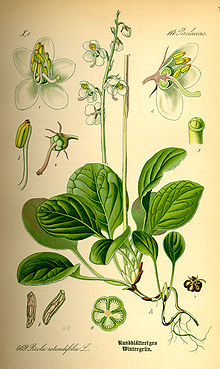
Quercus ilex, the evergreen oak, holly oak or holm oak is a large evergreen oak native to the Mediterranean region. It is a member of the Ilex section of the genus, with acorns that mature in a single summer.
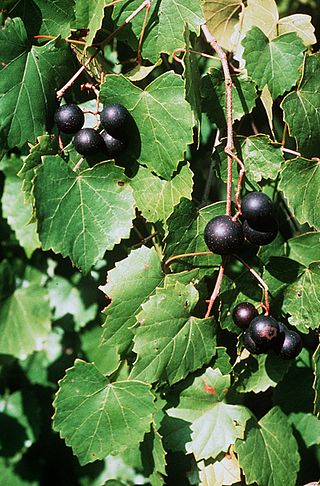
Vitis rotundifolia, or muscadine, is a grapevine species native to the southeastern and south-central United States. The growth range extends from Florida to New Jersey coast, and west to eastern Texas and Oklahoma. It has been extensively cultivated since the 16th century. The plants are well-adapted to their native warm and humid climate; they need fewer chilling hours than better known varieties, and thrive in summer heat.
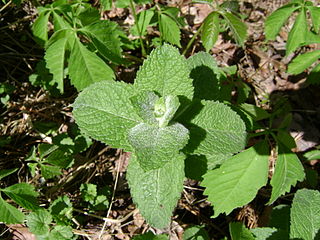
Mentha suaveolens, the apple mint, pineapple mint, woolly mint or round-leafed mint, is a member of the mint family Lamiaceae. It is native to southern and western Europe including the Mediterranean region. It is a herbaceous, upright perennial plant that is most commonly grown as a culinary herb or for ground cover.
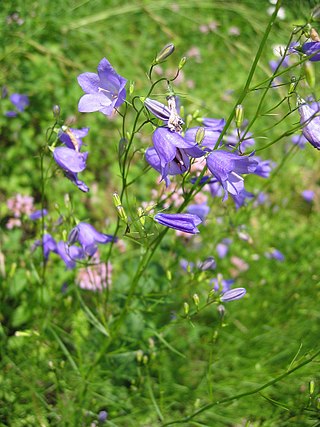
Campanula rotundifolia, the harebell, Scottish bluebell, or bluebell of Scotland, is a species of flowering plant in the bellflower family Campanulaceae. This herbaceous perennial is found throughout the temperate regions of the northern hemisphere. In Scotland, it is often known simply as bluebell. It is the floral emblem of Sweden where it is known as small bluebell. It produces its violet-blue, bell-shaped flowers in late summer and autumn.
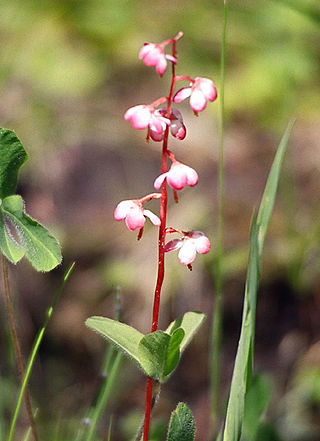
Pyrola is a genus of evergreen herbaceous plants in the family Ericaceae. Under the old Cronquist system it was placed in its own family Pyrolaceae, but genetic research showed it belonged in the family Ericaceae. The species are commonly known as wintergreen, a name shared with several other related and unrelated plants. They are native to northern temperate and Arctic regions.

Drosera rotundifolia, the round-leaved sundew, roundleaf sundew, or common sundew, is a carnivorous species of flowering plant that grows in bogs, marshes and fens. One of the most widespread sundew species, it has a circumboreal distribution, being found in all of northern Europe, much of Siberia, large parts of northern North America, Korea and Japan but is also found as far south as California, Mississippi and Alabama in the United States of America and in New Guinea.
NVC community W2 is one of the woodland communities in the British National Vegetation Classification system. It is one of seven woodland communities in the NVC classed as "wet woodlands".
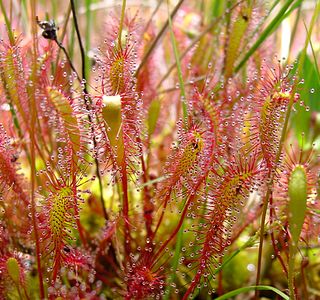
Drosera anglica, commonly known as the English sundew or great sundew, is a carnivorous flowering plant species belonging to the sundew family Droseraceae. It is a temperate species with a circumboreal range, although it does occur as far south as Japan, southern Europe, and the island of Kauai in Hawaii, where it grows as a tropical sundew. It is thought to originate from an amphidiploid hybrid of D. rotundifolia and D. linearis, meaning that a sterile hybrid between these two species doubled its chromosomes to produce fertile progeny which stabilized into the current D. anglica.
NVC community W3 is one of the woodland communities in the British National Vegetation Classification system.

Pyrola media, the intermediate wintergreen, is a flowering plant in the genus Pyrola, native to northern and eastern Europe and Western Asia.

Pyrola chlorantha, the greenflowered wintergreen, is a species of the plant genus Pyrola. It has a circumboreal distribution and is found throughout the northern latitudes of Eurasia and North America.

Pyrola asarifolia, commonly known as liverleaf wintergreen, bog wintergreen or pink wintergreen, is a plant species of the genus Pyrola native to western North America. It is found primarily on forest margins at mid latitude in the Pacific Northwest and northern California. It is so named simply because its leaves maintain their green color through winter.

Pyrola minor, known by the common names snowline wintergreen, lesser wintergreen, and common wintergreen, is a plant species of the genus Pyrola. It has a Circumboreal distribution and can be found throughout the northern latitudes of Eurasia and North America.

Drosera intermedia, commonly known as the oblong-leaved sundew, spoonleaf sundew, or spatulate leaved sundew, is an insectivorous plant species belonging to the sundew genus. It is a temperate or tropical species native to Europe, southeastern Canada, the eastern half of the United States, Cuba, Hispaniola, and northern South America.
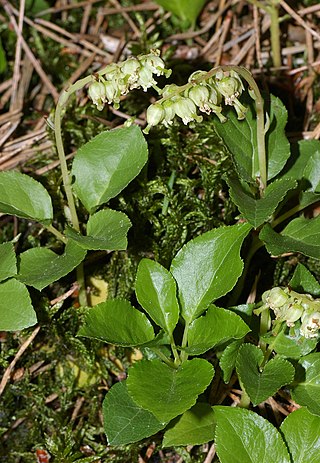
Orthilia is a genus of flowering plants in the family Ericaceae. It has only one species, Orthilia secunda. Its common names are sidebells wintergreen, one-sided-wintergreen and serrated-wintergreen. It is also called one-sided pyrola, one-sided shinleaf, and one-sided wintergreen. It was previously part of genus Pyrola, the wintergreens.

Possil Marsh is a nature reserve and Site of Special Scientific Interest, of both flora and fauna, within the city of Glasgow, Scotland. The reserve was once part of an extensive system of lochs and marshes which extended throughout much of lowland West Central Scotland. However, centuries of drainage and reclamation have resulted in the elimination of much of this system. Due to its geographic position, the marsh is particularly vulnerable from industrial and residential development. The reserve contains a monument for the High Possil meteorite, which fell there in 1804.

Vitex rotundifolia, the roundleaf chastetree or beach vitex, is a species of flowering plant in the sage family Lamiaceae. It is native to seashores throughout the Pacific. Its range includes continents and islands stretching from India east to Hawaii and from Korea south to Australia. This shrub typically grows approximately 1 m in height. It has a sprawling growth habit and produces runners that root regularly at nodes. This rooting pattern allows the plant to spread rapidly. At maturity, V. rotundifolia produces blue-purple flowers that are borne in clusters and ultimately yield small brown-black fruits. Its leaves are rounded at the tips with green upper surfaces and silver lower surfaces. While the plant is a seashore obligate, it grows over a wide latitude range. It has been used for medicinal purposes throughout its native range. More recently, it was imported to the eastern United States where it has become a seashore invasive. Control efforts are presently underway to protect the fragile beach dune ecosystem.

Quercus rotundifolia, the holm oak or ballota oak, is an evergreen oak native to the western Mediterranean region, with the majority on the Iberian Peninsula and minor populations in Northwest Africa. The species was first described by Jean-Baptiste Lamarck in 1785. It is the typical species of the Iberian dehesa or montado, where its sweet-astringent acorns are a source of food for livestock, particularly the Iberian pig. Its acorns have been used for human nourishment since the Neolithic era. It is placed in section Ilex. Some authors described it as a subspecies of Quercus ilex.

Saxifraga rotundifolia, common name round-leaved saxifrage, is a flowering herb and alpine plant of the genus Saxifraga.

Salix repens, the creeping willow, is a small, shrubby species of willow in the family Salicaceae, growing up to 1.5 metres in height. Found amongst sand dunes and heathlands, it is a polymorphic species, with a wide range of variants. In the UK, at least, these range from small, prostrate, hairless plants at one end of the spectrum to taller, erect or ascending silky-leaved shrubs at the other. This wide variation in form has resulted in numerous synonyms.
